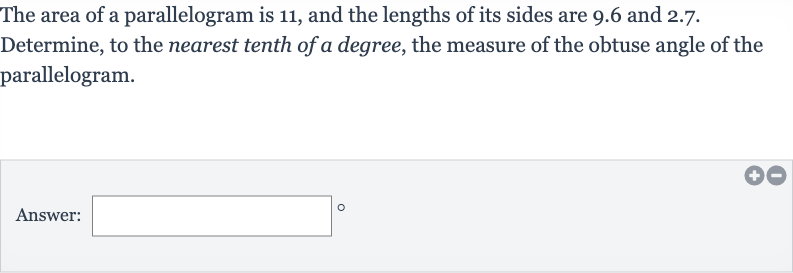Full solution
Q. The area of a parallelogram is , and the lengths of its sides are . and .. Determine, to the nearest tenth of a degree, the measure of the obtuse angle of the parallelogram.Answer:
- Calculate Area: The area of a parallelogram is given by the formula , where the base is one side of the parallelogram and the height is the perpendicular distance from the base to the opposite side. We can use this formula to find the height of the parallelogram.Calculation:
- Find Height: The height we found is the length of the perpendicular from one side to the opposite side, which also represents the sine of the acute angle between the base and the height.Calculation:
- Calculate Acute Angle: To find the measure of the acute angle, we take the inverse sine (arcsin) of the value we found.Calculation: (to the nearest tenth of a degree)
- Find Obtuse Angle: Since we are looking for the measure of the obtuse angle, we need to subtract the acute angle from because the sum of the angles in a parallelogram is , and opposite angles are equal.Calculation: obtuse angle obtuse angle obtuse angle
More problems from Find the magnitude of a three-dimensional vector
QuestionGet tutor help
QuestionGet tutor help
QuestionGet tutor help
QuestionGet tutor help
QuestionGet tutor help
QuestionGet tutor help

